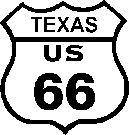Finding a way to substantially increase gas mileage while retaining decent performance has become one of the toughest problems
currently confronting hot rodders. It's not an impossible problem, and sometimes the easiest and least expensive solution
amounts to taking a good look at what you already have and how it might be adapted to existing hardware. That's exactly what
Don Dodge, an aircraft mechanic in Huntington Beach,California, did, and the outcome was really slick.
Don owns an early-model Camaro fitted with an LT-1 350 engine and a Saginaw four-speed transmission. It occured to Don
that some very interesting similarities exist between the three- and four-speed Saginaw manual transmissions. For example,
both versions use the same case, and the mainshafts are identical in both transmissions. With these similarities, Don surmised
that it might be possible to adapt the Saginaw overdrive (Chevrolet part No. 3924783), which was offered on '65-and-later
Saginaw three-speeds, to his Saginaw four-speed. This overdrive unit is essentially a planetary gear system incorporated into
the tailhousing of
the transmission that affords an approximate 30-percent reduction in engine speed when it is engaged. If purchased new, this
overdrive unit sells for about $200, but salvage yard prices should be considerably less.
Installation of the overdrive unit on the four-speed turned out to be quite simple. Following the Chevrolet shop manual
procedure, the three-speed reverse, first and second gears, along with their associated synchronizers and hubs, were removed
from the mainshaft of the overdrive and set aside. Then the tailhousing was removed was removed from the four-speed, and all
of the gears, hubs, etc., on it's mainshaft were installed on the overdrive mainshaft. As we said, the mainshafts are identical,
so this is a simple slide-'em-off/slide-'em-on operation.
Next, using the overdrive tailhousing gasket as a template, one hole had to be drilled in the mating face of the four-speed
case for the overdrive shift rail plunger.The
overdrive assembly, complete with four-speed gears, was then bolted to the four-speed case.
The next order of business was to weld a small tab to the reverse shifter arm. The purpose of this tab is to depress the
shift rail plunger of the overdrive unit when the transmission is put into reverse. This tab, which goes on the internal end
of the reverse shifter arm, has to be approximately vertical, as can be determined when the unit is assembled. The tab is
required to disengage the overdrive in reverse or else the vehicle will not back up.
With the tab positioned and welded into place and the transmission side cover reinstalled, the completed
transmission was then installed in the car. Since the overdrive tailhousing is the same length as the stock four-speed tailhousing,
no crossmember or driveshaft modifications were required.
To control the four-speed with overdrive, the overdrive mechanical control had to be connected and mounted under the dash
as indicated in the Chevrolet shop manual and the electrical connections and throttle kick-down switch installed as indicated
in the shop manual wiring diagram. These controls allow positive mechanical lockout of the overdrive when it isn't desired,
and the kick-down switch pops the unit back into direct drive, just like a passing gear, at full throttle.
Of course, an appropriate shifter was still needed. A Hurst four-speed shifter, utilizing the Hurst shift rods
(available separately) from their three-speed overdrive kit will work just fine, although the four-speed reverse rod
must be bent a little for clearance.
The completed conversion is rugged, reliable, quiet and effective. It will even withstand drag strip use with the
overdrive locked out. With such an overdrive setup, it is possible to have a high numerical rearend for good
performance and still have a livable final-drive ratio for street cruising and good gas mileage.For example, with a 4.11:1
rearend in his Camaro, Don is able to get in excess of 20 miles per gallon on the open highway, while the engine loafs along
at about 2000 rpm at 55 mph in overdrive. Once again, hot rodding ingenuity proves that you can have your cake and eat it,
too.

